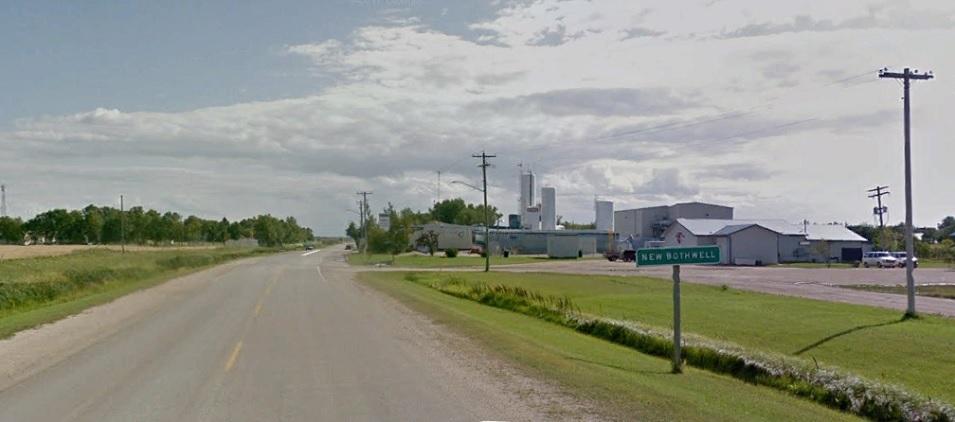In this summer series, The Citizen is taking a look at the unique history of each town in our corner of southeastern Manitoba. Let’s take some time to learn more about this beautiful part of the province we call home.
New Bothwell, like the rest of the communities served by The Citizen, lies on Treaty One land. The area was originally inhabited by the Anishinaabe, who signed that treaty in 1871. As the Anishinaabe were leaving their territory, moving onto reserves, approximately 7,000 Mennonites from southern Russia were on their way in.
In 1763, Empress Catherine the Great of Russia penned a manifesto with the aim of welcoming large numbers of immigrants. Huge areas of Russia, particularly in Crimea, were scarcely populated and Catherine wanted to boost her power and the country’s economy by adding productive new residents.
Catherine provided multiple incentives to sway people to immigrate to Crimea, but one of the more pertinent ones for Mennonites was the freedom to worship and build their own churches. Catherine also allowed them to follow two of their main religious tenets: pacifism and adult baptism.
In 1861, the new czar of Russia, Alexander II, issued his own manifesto, and it was problematic for the pacifistic Mennonites. He made military service mandatory and also began to exert control over the Mennonites and their schools.
In response, the Mennonites began to leave Russia.
Wanting to attract these farming families to the prairies, the Canadian government offered inducements by way of exemption from military service, religious freedoms, and the granting of large tracts of land for their exclusive settlement.1
“An amendment to the Dominion Lands Act allowed [the Mennonites] the privilege of settling in villages, circumventing the demand that each farmer had to reside upon his own homestead, a requirement which guaranteed dispersal of settlement,” reads a historical account of the Mennonites’ arrival. “The Mennonites were thus able to retain their distinctive ‘Strassendorf,’ or street villages. Like many other religious groups, they saw cohesion and religious solidarity as being dependent upon the settlement pattern of the group.”2
The Mennonites found these terms acceptable and began to arrive in Manitoba, where they were granted two reserves. The East Reserve, located east of the Red River, was granted in 1873 and encompassed eight townships, one of which would become New Bothwell.
Some European immigrants found the rocky land in the East Reserve difficult to farm, but many Mennonites, among them those who had grown accustomed to farming the steppes of Russia, were not dissuaded.2
Feeling secure in the East Reserve, these Mennonites created more townships, and eventually there were 37 villages.
These villages were most often built around a single street, called the Strassendorf, which was generally built near or in line with a creek or other source of running water. Houses and barns would line one or both sides of the street.2
Most of the original villages in both the East and West Reserves have disappeared over the years, but a few remain in one form or another. Kronsthal, which translates to Crown Valley, was located on the western edge of what is now New Bothwell. Kronsthal had a few farms and a small private school.3
Kronsthal may still exist as New Bothwell, but the traditional Strassendorf layout does not.
The first public school districts in the East Reserve were created in 1919 and included Arran, Moray, Seaton, and Bothwell. The Bothwell School was located about a half-mile east of Kronsthal.3
The Canadian government chose British-sounding school names in an attempt to assimilate the Mennonites. The town itself, however, remained under the name Kronsthal until 1939, when the post office was established.
Residents of Kronsthal wanted to register the community’s official name as Bothwell, after the school, but this name was already registered in Ontario, so they simply added “New” to the name.3
After Bothwell School opened, families and businesses began moving into the area. In 1936, the nascent Bothwell Cheese began as a co-op of dairy farmers looking for ways to use up their extra milk.
Today, after 86 years in business, Bothwell Cheese remains in many ways the backbone of the village. The cheese plant produces more than 15,000 kilograms of cheese every day and employs more than 60 people. Not only that, but the company has said it remains committed to purchasing 98 percent of its ingredients from within 100 kilometres of New Bothwell.4
By the 1960s, New Bothwell was the only village left in the area. The old school districts were disbanded and a new government-run school was built. The school was absorbed into the newly formed Hanover School Division.3
In 2019, New Bothwell, now home to more than 600 people, celebrated its centennial.5
REFERENCES
1 Alexey Timofeychev, “Why Did Empress Catherine the Great Invite So Many Foreigners to Russia?” Russia Beyond. July 22, 2018 (https://www.rbth.com/history/328811-history-foreigners-in-russia/amp).
2 “Mennonite Settlement,” Government of Manitoba. Date of access: July 21, 2024 (https://www.gov.mb.ca/chc/hrb/internal_reports/pdfs/crow_wing_later_set…).
3 “New Bothwell, Manitoba,” Wikipedia. Date of access: July 21, 2024 (https://en.wikipedia.org/wiki/New_Bothwell,_Manitoba).
4 “Meet Bothwell Cheese,” Bothwell Cheese. Date of access: July 21, 2024 (https://www.bothwellcheese.com/our-story).
5 Dave Baxter, “New Bothwell Set for Centennial Celebration,” The Carillon. June 21, 2019 (https://www.thecarillon.com/local/2019/06/21/new-bothwell-set-for-cente…).


